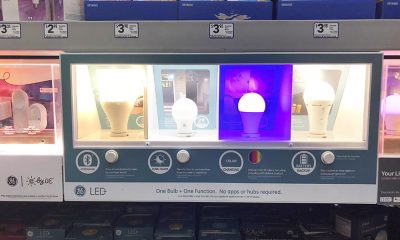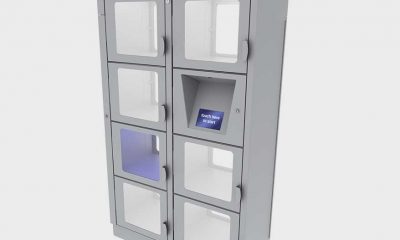[This is the first post in a four-post blog series in which we’ll address common pain points clients face while planning a visual merchandising campaign as well as multiple solutions to address these challenges.]
We hear it all the time. “Will it fit my budget?”
Whether it’s asked by a client or discussed within our internal concept meetings, that omnipresent number is always top-of-mind when considering designs and materials as visual merchandising projects take shape.
But just because cost parameters might suggest budget and great design are a “one or the other” option, this doesn’t have to be the case. In fact, these two factions can easily go hand-in-hand.
We asked Frank Mayer and Associates, Inc. estimator Miguel Ruiz for insight on budget-friendly tips when designing impactful visual merchandising campaigns.
Consider Materials
In a perfect world, you’d achieve your desired mahogany or marble display aesthetic by using just that – mahogany wood or marble slabs. But let’s be realistic. You obviously need to factor in the return on investment from the products you’re selling against the display costs.
Advertisement
Sourcing similar, more reasonably-priced materials can maintain the desired appearance of a display concept without breaking the bank.
And while things like mahogany wood and marble are clearly expensive materials, you’d be surprised by the savings that engineering less obvious supplies can afford. For instance, digitally printing concrete is much more cost-effective versus a concrete laminate or even the real thing, but at a fraction of the cost.
“As long as the display gets across the intended ‘vibe,’ customers aren’t going to recognize if a feature was constructed with real bamboo or a bamboo veneer,” Ruiz says. “Often, the look you were after will still come across, but for a better price.”
Evaluate Hardware Options
Before entering the design stage, take into consideration how often a fixture will need to be moved. Doing so can determine what hardware components might be necessary – or, in this case, not necessary.
“If a display will only be relocated once a quarter or once a year, avoid the cost of casters in favor of levelers instead,” Ruiz says.
And while savings might be minimal per unit, small details like this can easily add up when a brand or retailer rolls out a large order.
Advertisement
A New Take on Graphics
Graphic elements are particularly important on a merchandising display, as they’re often the first thing to grab a shopper’s attention and encourage him or her to explore further. Thus, it’s not uncommon for a brand to be especially concerned with what graphics look like and how they’re implemented on a display.
But creating interest using stand-off graphics or backlighting can be expensive. Instead, Ruiz suggests exploring ways to create visual interest using shadows in the actual artwork design. He emphasizes it’s especially effective for headers eight to 10 feet high since it gives the appearance of dimension from farther away.
The Benefits of Miter Folding
Miter folding is the process of folding material along scores to create a seamless corner. V-groove equipment generates channels in a material like MDF or laminate that act as hinges and allows the material to be folded.
Imagine you need a small cube display that requires color on all surfaces. Typically, you might consider laminating all surfaces after fabrication, but the manual labor would make it far too expensive in addition to exposing the dreaded black lines in the corners, characteristic of high-pressure laminate use.
You might contemplate painting it after fabrication, instead, but this too would be expensive, and the finished product runs the risk of looking different from one piece to another due to manual spray painting.
Enter miter folding as a cost-effective option that delivers a nice-looking piece. Using this technique not only saves costs due to less material and more efficient assembly, but miter folding can also improve aesthetics and reduce the weight of finished items.
Advertisement
Flood Coating for Small Orders
Sometimes a display might require a plastic element, like a shelf. If hundreds are required, the minimum quantity of pounds of material is typically met and a color match of the required color would be completed.
However, if fewer units are needed, ordering colored plastic material would be cost-prohibitive.
Flood coating the second surface, or the underside of a clear material, allows the use of a more readily-available clear plastic. The process involves covering the entire back surface of the clear material with the desired ink color, so the color seen through the clear plastic fools the eye into thinking it’s a solid material in a custom color.
Ruiz adds, “This also has the additional benefit of preventing rub off from any ink, so in some cases, even brand imagery has been printed on the back surface as well.”
Think Square
Curved surfaces are gorgeous, but unfortunately the price tag isn’t. Using rounded surfaces at retail is synonymous with excessive hand labor and fabrication, generally by highly-skilled craftsmen who can make only a handful of units a week.
Manufacturing en masse has slightly improved, but limitations still exist in this area. Sheet metal can “roll” to create a similar effect, but labor is still needed to weld, fill, and grind to make surfaces smooth and visually soft.
“Curved and rounded edges are more typically found in one-off flagship stores where budgets can absorb the extra costs for a particular look,” Ruiz says. “But as seen with techniques like miter folding, square and flat surfaces make more use of high-capacity, high-quantity production methods, improving on price dramatically.”
Can Tooling Be Avoided?
The use of tooling is a broad concept in the retail and point-of-purchase industry where it expands several disciplines including injection molding, vacuum forming, metal stamping, roto molding, and more.
In most instances, quantity is king. If you’re planning a large order with thousands of units, tooling makes sense to keep pricing low and efficiency high.
At times, tooling can be unavoidable in the case of a highly-customized or multi-functional part. For these examples, tooling ensures a consistent, high-quality and dimensionally-accurate part will be produced every time.
But what about the cases when quantities are low? Creating a custom tool in this instance would make little sense as the price would make the total costs unreasonable. What do you do in this instance?
“May companies have taken 3D printing to a competitive level with manufacturing,” Ruiz reveals. “Because 3D printing two to three hundred parts is common now, design houses are able to produce intricate parts without the need to invest in hard, expensive tooling and where hand fabrication is not even an option.”
A World of Possibilities
The options are endless when it comes to saving money in design costs without having to compromise your overall vision. A good merchandising display company will have experienced teams of designers and estimators who recognize solutions to meet your goals – all while staying within your budget guidelines.

 Photo Gallery3 days ago
Photo Gallery3 days ago
 Headlines1 week ago
Headlines1 week ago
 Sector Spotlight2 weeks ago
Sector Spotlight2 weeks ago
 Headlines1 week ago
Headlines1 week ago
 Headlines4 days ago
Headlines4 days ago
 Headlines2 weeks ago
Headlines2 weeks ago
 Designer Dozen1 week ago
Designer Dozen1 week ago
 Headlines2 days ago
Headlines2 days ago




















